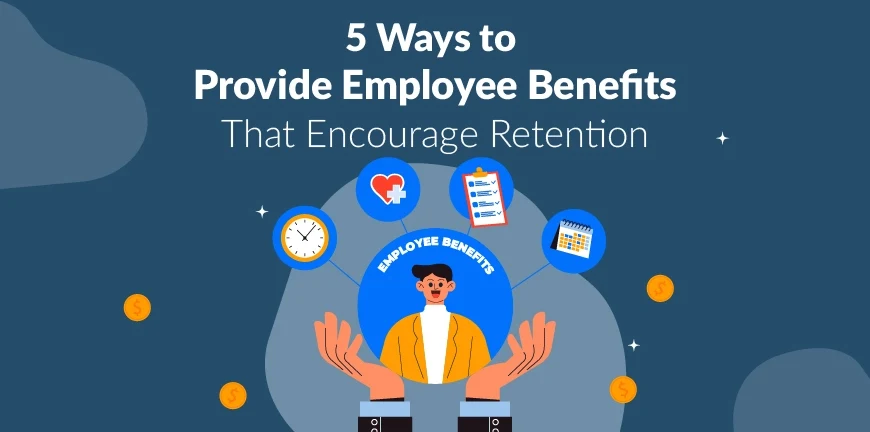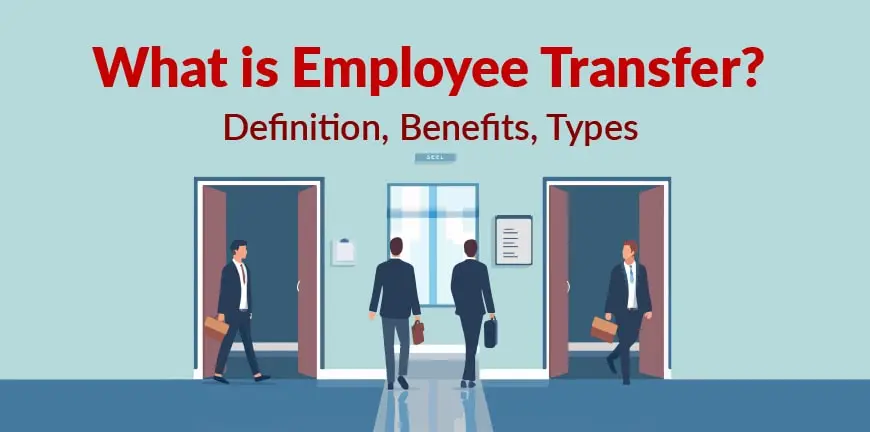
AI-logically Yours: 10 Ways to Empower Talent Acquisition with AI
04/02/2025
How to Build a Recruitment Process? The Ultimate Guide to Hiring Top Talent in 2025
06/02/2025Studies have shown that during the Covid pandemic nurses and medical staff migrated from low and middle-income countries to higher-income countries, increasing the burden of disease in the former. Such migrations in labor were seen across industries crucial to support systems during the pandemic. This does not take anything away from the millions who stayed back to help the diseased during the second wave of the pandemic, many losing their lives in the process.
But this leaves room for thought – What can industries or specifically businesses do to retain their employees? One of the many things that they can do is to offer benefits that prompt employees to stay on in the company. The company must put some thought into how it can dispense its benefits so that employees continue to work for it, and even voice support for any initiative it undertakes.
How to Work Out Employee Benefits That Encourage Retention in 2025
Did you know that two leaves on the same tree are not identical? In the same way, two people in the same company, possibly even in similar roles, have different personalities. When doing what is right and in the best interests of the company, there must be an overlap. Employee engagement is also critical to business success. Here are some of the ways businesses can provide employee benefits to ensure employee retention.
1. Give Special Attention to the 35-44-Year-old Cohort
A study showed that the 35-44-year-old cohort are most likely to job hunt, driven by pay dissatisfaction and heavy workloads. They are also the people who are most likely to be in highly critical senior-level positions in the company, and their leaving can impact the functioning of people and processes.
So special care must be taken to ensure that these people stay on in the company. Offer them benefits that give them peace of mind such as premium health benefits, paid time off, family leave, and generous ESOPs and other options. KPMG also says that 35–44-year-olds are generally also worried about the environmental impact that the company has. So, sustainability and environmental protection initiatives might also help.
2. Focus on the Well-Being of All Employees
Johnson and Johnson claim that healthcare and wellness programs at the workplace helped save up to $250 million dollars in a single decade. 80% of employees also state that mental health support systems are a key factor when thinking of changing companies. It helps being popular as an employer who cares about the well-being of employees, not just because everyone’s doing it or because people tend to be loyal to such companies but also because it brings in more talent to the company who will continue to believe in such ideas. Coming together, the present and the future employees will help build a workplace culture that is healthy and safe for everyone. Here are some things you can do.
Distribute the work evenly for high volume of work roles
Investigate the roles where the volume of work is too high and assign freelancers to work alongside the full-time employees. You can also have a counselor on the floor to manage the employee stress and advise solutions.
Give paid time offs and encourage long holidays
Give employees the freedom to take their sick and casual leaves as they choose, even if it coincides with a deadline, if they have informed sufficiently well in advance. In fact, encourage employees to post their holiday pics on social media and even tag your office and say thank you!
Provide childcare solutions
Many office workers must also manage their children and possibly even elders at home after their office. Sometimes their priorities may clash with office work. Here is where having childcare and eldercare facilities can help and indirectly also contribute to employee well-being.
Pets in the office setting can help battle stress
Office environments can be taking, especially without frequent breaks or fun-time activities. Sometimes these activities may help but many times, employees may not engage actively because they are already stressed out. This is where having a pet or pets in the office can be very relieving. People tend to engage with them even when they are down or stressed out.
3. Work Out Benefits for Women Employees
Gender diversity is respected and a much-needed component of office culture, as it helps create a better and safer environment for everyone. A woman must very often juggle between her role as a mother and a full-time employee. She will need support from the company, in terms of longer paid leaves and shorter working hours. A big shout to single fathers who also do the same and who we believe deserve the same privileges!
4. Establish Strong ERGS to Encourage Diversity
A diverse and inclusive workplace is one where individual voice, no matter what race, ethnicity or background they belong to, are heard and valued. To make this happen, it helps to have employee resource groups of people with shared characteristics. Designate a person to control the ERGs and report their functioning to the organization. Designate a few members within the ERG to take feedback from other members and share it with your DEI team too.
5. Be Holiday-Friendly
Employees are more concerned about work-life balance ever since the pandemic gave them a chance to reconnect with their families all over again. And many people today prefer to work from the comfort of their homes. If you encourage employees to work from the office, be holiday-friendly, so that employees can reconnect with their loved ones. Relax leave policies and ensure that employees take the leaves they are entitled to. Promote an office culture that celebrates the spirit of holidays.
Closing Words
We hope the tips we gave resonated with every employee and employer out there. Retaining employees for a longer term can lead to increased innovation, safety of intellectual property, and increased reputability for your organization. Start today in your organization and start small if you need to, but have a clear plan of action, secure buy-in from decision-makers and genuinely feel for employees, because just as they need you, you need them too.
Contact Us For Business Enquiry

Rajkumar Shanmugam
Rajkumar Shanmugam is the Head of HR at ALP Consulting, bringing over 19 years of comprehensive HR leadership experience across India and international markets. His expertise spans talent acquisition, employee relations, performance management, compliance, and HR transformation. Rajkumar has a proven track record of driving people-centric initiatives, enhancing workplace culture, and aligning HR strategy with business goals. With extensive experience in US staffing operations and global mobility, he continues to lead organizational excellence through innovation and employee engagement.




